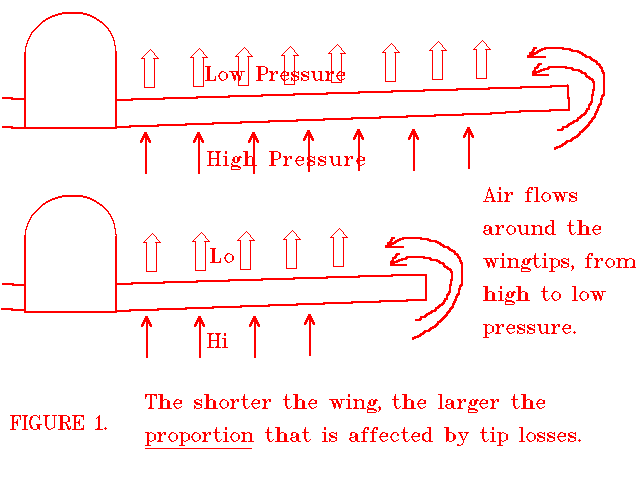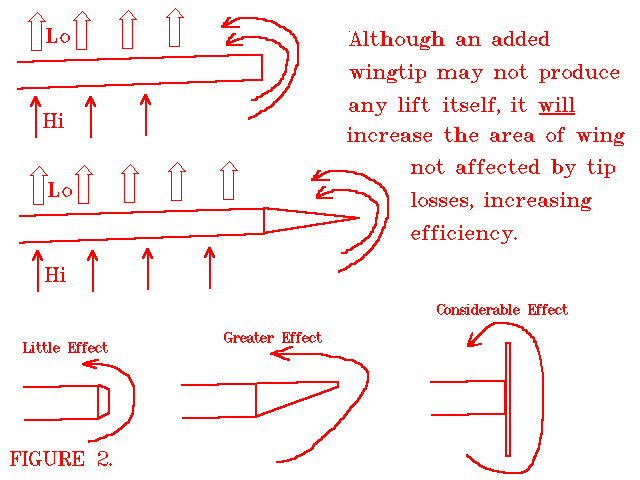
WINGTIPS -WHAT GOOD ARE THEY??
-by Clay Ramskill
There are just about as many types of wingtip treatments as there are plane designs - which is a whole bunch! Why?
There are several lines of reason that can be applied to the tips designers put on their wings. Looks is one; a squared off tip looks a bit rough, like maybe the designer wasn't smart enough to come up with something better! However, that's the cheapest and easiest way to do it, so economics/ease of construction is a factor. Another reason for the wingtips might be efficiency. Just look at the winglets they're putting on some airliners these days; efficiency is what those birds are all about! And there are other areas that the wingtip can affect - like roll rates, stall characteristics, aileron flutter, and so on.
Let's take a look at the wingtip. In flight, a plane is supported by the air flowing over the wing; the airfoil shape is such that we get high pressure on the bottom of the wing, low pressure on the top. The difference between those pressures, spread over the area of the wing, gives us the lift we need. But the air will always want to flow from an area of high pressure to the lower pressure areas - at the wing tip, that's just what happens. (see fig. 1) That flow of air lessens the differential between the high and low pressure in that area, so we have less lift out at the tip. This lessening of the lift out at the wingtip (tip losses) gives us the possibility of increasing the efficiency of that wing by cutting down on those losses.

Tip losses vary considerably with different wing configurations; the losses increase in some proportion to the following: higher angle of attack, lower aspect ratio, higher wing loading, lower airspeed, higher sweep angles, and of course the design of the wingtips.
The first way to cut tip losses is by increasing the Aspect Ratio of the wing; that is, building the wing longer in proportion to its chord, or width. Thats why gliders have such long, narrow wings. All other things being equal, the longer wing has the same tip losses - BUT those losses will affect a lesser proportion of the total wing. Figure 1 illustrates this point.
And the point here is that ANY thing that lengthens the wing, even if the extra tip area is not lift producing itself, will help make that wing more efficient at producing lift. (see figure 2) NOTE; we can't get too wild with this concept - because anything we add to the wing will also produce drag!

Also note in figure 2 that not only the distance the air has to go from the bottom of the wing to the top has an effect, but also sharp corners will play a part. The sharper the corner the air must make, the less the flow. So a tip plate may be the most efficient of all, in that there is not only considerable distance "around the tip", but also two sharp corners!
The wingtips will also affect the planes roll rate, especially if there is a sharp corner out at the end. In general, a rounded tip will allow higher roll rates than will one with a sharp end.
Wing tips are an area where you can easily do (and undo) modifications to your plane, to alter some of its performance characteristics. You may not see much, if any, change to an already efficient wing, like a full span Cub wing. But on a plane with shorter, higher loaded wings, differences from the tips may be quite noticeable.
Site maintained by QSoftWorks
Last Update: 10/12/97